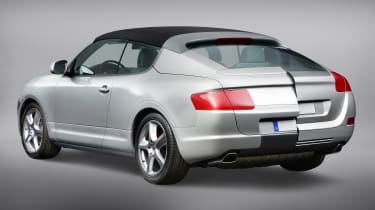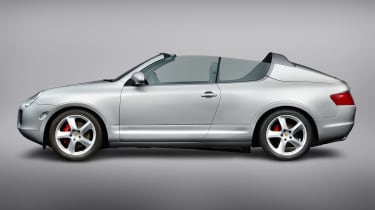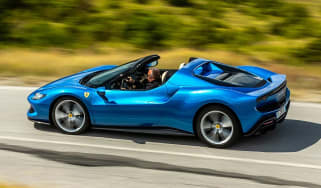Never before seen Porsche Cayenne Convertible revealed
If the Cayenne shocked Porsche diehards in 2002, this convertible would have put them into a coma
There are a few basic understandings that we at evo adhere to. In general, we don’t love SUVs, nor are we fans of convertible derivatives – both compromise on capability and drive for the sake of image and not much else. So when the two are combined, well, it can sometimes be a perfect storm of terrible-ness. Thankfully, the combination doesn’t reach production often – the Evoque and T-Roc convertibles are the only two in recent European memory – but Porsche could very nearly have been added to that list, with this grotesque open-top take on its original Cayenne SUV.
It’s normal for manufacturers to explore every derivative avenue for a new model, as the Cayenne was in 2002. Yet Porsche’s experimental phase came in conjunction with a period of intensive investment in engineering from within the whole VW group under the leadership of Ferdinand Piech, meaning that unlike the proposed long-wheelbase and Coupe models, the Convertible wasn’t immediately canned. As a result, it kept the Cayenne Convertible under development long enough for this Package Function Model (PFM) to have been created.
A PFM is generally designed to physically test for things like ingress and egress, headroom, seating position and general packaging basics that are difficult to ascertain on paper or within a computer program. This model did just that, but it also allowed Porsche to mock up two different design options for the rear end, which would not just slope down to create a unique silhouette, but also integrate the massive folding roof arrangement.
Porsche also lowered the front windscreen, and extended the length of the front doors by 200mm, giving it a, erm, unique appearance. Of course, unlike the Land Rover Evoque Convertible, which was able to use essentially all of the of the same exterior bodywork as the three-door ‘coupe’, a Cayenne convertible would have required a whole new structure, with only the front wings, bumper and bonnet shared with the standard car.
Not only that, the standard Cayenne wasn’t really known for its aesthetic sensibilities as a five-door, so while I can’t tell you the prototype looked terrible, Porsche’s tone when talking about this model says all you need to know about its thoughts today – the joys of hindsight.
Of course, like all development projects that don’t reach production, there was always something to learn, and in this case it utilised a folding roof mechanism design that was eventually adopted by the 991-generation 911 Targa. This model returned to the original rail-out design complete with a wraparound glass tailgate and metallic hoop, after the 993’s introduction of a sliding glass arrangement.
Of course you can buy your Cayenne today in a coupe form, but with its gently-sloping roofline and four-doors, it’s hardly as challenging both in terms of its development or its design acuity. If you’re disappointed that Porsche chickened out, Google something called the Nissan Murano CrossCabriolet, and you’ll see why luxury five-door SUVs don’t make good convertibles










